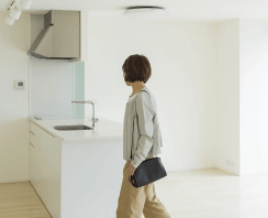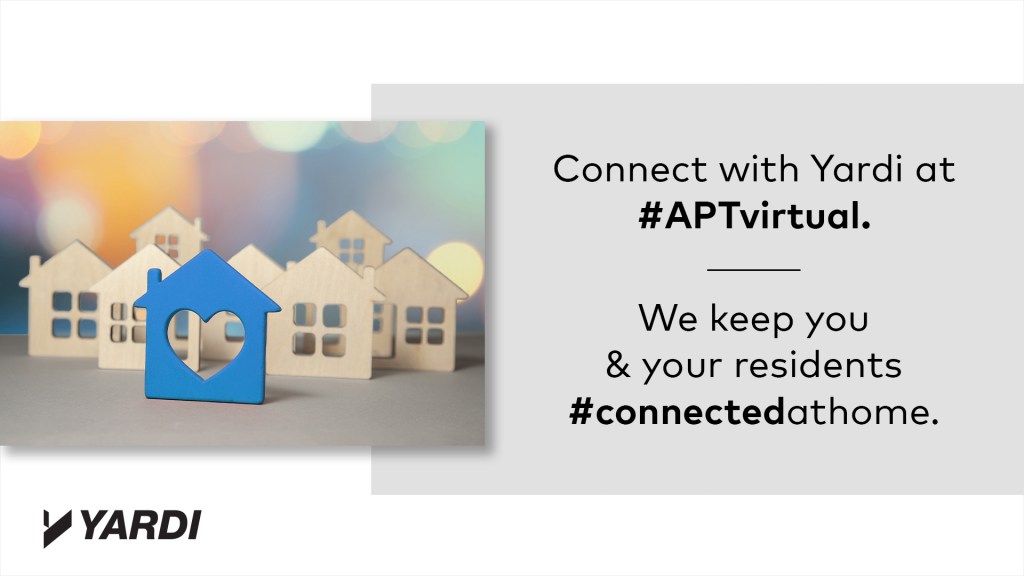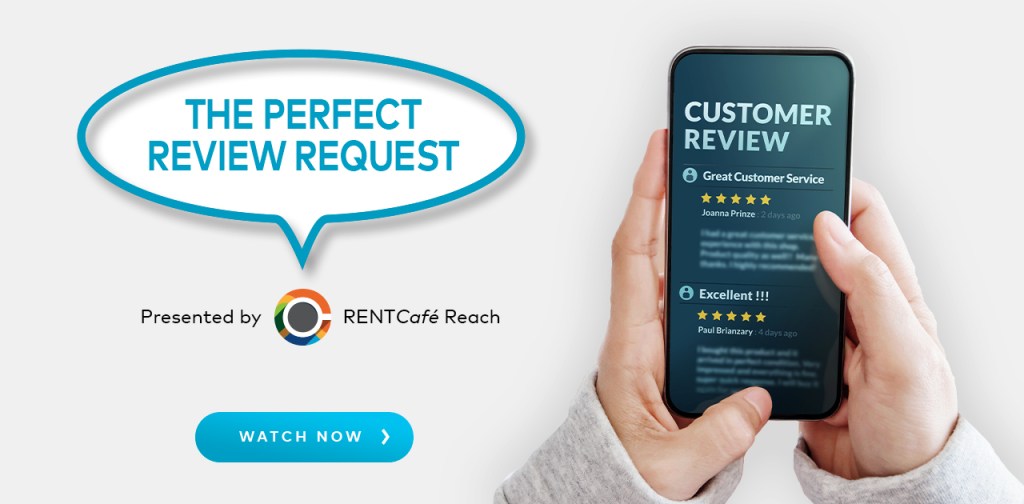Do you want to excel in marketing and optimize your multifamily property performance? Of course, you do. With a little (free) help from the experts, reaching both goals is simpler than you may think. Multi-Housing News Marketing Resources Multi-Housing News (MHN) is a digital magazine that provides leaders in the multifamily housing industry with the most current news, information and analysis. Its content helps decision makers run their businesses more efficiently and profitably. The ongoing ascent of online marketing highlights a need for insightful, practical and timely marketing content. This spring, we proudly introduce Multifamily Marketing Resources, a user-friendly repository of content to help get the right eyes on your property. Explore articles, videos, reports and more to help you get the most out of your marketing spend. What online marketing tips and tricks can you learn on MHN? MHN publishes daily, which means that you get the freshest insights to help you stay ahead of the marketing game. Get an array of timely tips and hacks to make marketing easier. Below is just a sneak peek at what you can find. Is your website working for you? Your website is no longer just a first impression. It may be your only chance to stand out from the competition. Prospects use websites and their online tours to narrow down potential properties. “There has been a fundamental shift from the website as a marketing channel to the website as part of the tour,” said Esther Bonardi, vice president of corporate & multifamily marketing at RentCafe and Yardi. “Today, leasing activity starts earlier and it starts on the website. I don’t think this is a passing fad just related to the pandemic,” Bonardi added. “I think these behaviors will stick, especially as we see new Gen Z renters coming into the renter marketplace. Their shopping behaviors were shaped right now at this moment in time. But even for the rest of us, I think the pandemic has gone on long enough that it has reshaped customer behavior.” Read Attracting and Converting Potential Renters with Your Website to learn how you can transform your website into a more powerful marketing tool. Create email subject lines that won’t be ignored Every email that you send is battling against dozens of competitors in your prospects’ inbox. The time and creativity that you put into your email won’t fulfill their potential if the email goes unread and deleted. To improve your open and click through rates, there are five main things to consider. These three are a great place to start: Prompt people’s curiosity: Make them want to click to see what’s inside the email. Is it an offer? A new resident service or amenity?Make sure the email is formatted well: Create subject lines that are 60 characters or fewer with the important words near the front of the subject line.Avoid clickbait-y phrases: Be compelling and transparent. Don’t say they’ve won something if they haven’t or create a false sense of urgency. Read Email Subject Lines That Work in Apartment Marketing for additional ways to get your emails opened, read and engaging readers. More marketing goodness to explore on MHN The field of online marketing constant evolves. Best practices, new techniques and trends can be a lot for small teams to manage. Fortunately, the team at MHN makes it easy for you to stay abreast of the latest in multifamily marketing. Get marketing goodness sent directly to your inbox. Simply subscribe to the monthly digital...
Google Ad Updates
Tips for PPC Success
Surprise! Google is changing its match types again. This is the fifth time that Google has changed match types. And as we all know, algorithms are constantly evolving as well. We’re here to help you out with a quick overview of what’s changed, how it might help, and who benefits most. So long and goodbye beloved match type! The Google Ads that we all know and love have four match types. From least to most restrictive they are broad, modified broad, phrase and exact. In 2010, Google introduced modified broad. It accounted for misspellings, different tenses, and keywords presented in different order. It bridged the gap between the array of relevant queries that searchers submitted and who marketers intended to reach. In 2014, broad match improved so that the structure of the keyword mattered less. Searchers would submit queries with or without necessary hyphens and spaces. “3 bedroom garden style apartments in Philly” and “3 bedroom garden-style apartments in Philadelphia” would behave the same. Marketers were in love. Broad match became one of the most popular and successful match types alongside phrase. It offered flexibility, versatility and ease of use. Now we’re saying goodbye. What’s changed as of Feb 2021? Modified broad match type is being eliminated in July 2021. You won’t be able to add any keywords to this match type. Phrase match is incorporating behaviors of modified broad. In doing so, Google aims to simplify keyword usages and make it easier to find more relevant customers. Moving forward, both match types will have the same matching behaviors to the same traffic. This change isn’t entirely surprising. A lot of specialists have noticed that the lines between the two match types have been blurring for about a year now. What we wonder, though, is how Google will take into account when keyword order is necessary. Someone searching for “units converted from factory to lofts in Minneapolis” will not be equally as interested in “units converted from lofts to a factory.” That would make for confusing and uncomfortable living conditions. Google reports that this will be taken into account, but not much detail is given. Why is Google changing its match types and what are the advantages? Per Google, The Rule of Close Variance and other factors make it so that there is no need to have two distinct types. The algorithm has gotten smarter and “learned” to decipher what advertisers and searchers intend when using modified broad and phrase match types. You may feel that’s a lot of trust to put into artificial intelligence. It is. But less hands-on engagement with match types can free up marketers to other creative tasks that are not so easily automated. There is also greater potential for traffic. More traffic could be good. The PPC community has mixed feelings about these changes. That’s okay. Is the PPC advertising community pleased to see the merging of the match types? Feedback varies. In an interview on the topic, PPC expert Mark Irvine states that each change to keyword match types brings “a lot of unpredictability to advertisers” and “may not lead to more [desirable] traffic.” Advertisers will have to re-work their strategies without the guarantee that they’re gaining efficacy in marketing. The boost in volume without greater specificity means that there is a small risk of getting more irrelevant traffic. This could also mean increased spend without increased conversions. Irvine notes that only accounts that get more traffic from phrase match keywords should expect an increase in their ad impressions, clicks, costs and conversions. Conversely, ads from modified broad match keywords and other match types will see a decrease in engagement or no change. Marketing expert Brett McHale adds that the recent change “blurs the lines between match types” and strongarms advertising into relying on Google’s recommendations. “The change to phrase match and phasing out of modified broad match appears to me to be...
Gen Z Renters
Next Generation Expectations
The oldest members of Gen Z are turning 24 this year. They were just seven years old when Facebook launched and 13 when Instagram came along. They have never known a time without the internet. And they’re poised to be the largest generation of renters ever. Just when we’ve adapted to Millennial renters, this new generation enters the market with its own set of renter preferences. But how different are they, really? A rentcafe.com survey of 2,500 renters revealed what Gen Z renters are looking for in their next apartment. First, see the results from that survey in an infographic that you can share. Then, get some tips for attracting and retaining Gen Z residents. Finally, watch a video interview with a Gen Z renter who shares her take on today’s online experience. Infographic: Gen Z renter preferences Gen Z is a generation of digital natives who value technology above most traditional amenities. They search for apartments on Google, check out reviews first and consider high-speed internet to be more important than onsite parking! While Gen Z renters may just be entering the market, their preferences indicate future multifamily trends. For example, this generation is 2x more interested than previous generations in smart home features like locks and thermostats. So for now, smart home features are nice to have. But in the future, will they be considered a must-have to demand the best rent rates? 3 tips for marketing apartments to Gen Z renters The results of this survey were also discussed during the keynote address of the Apartment Innovation and Marketing (AIM) Conference’s virtual Reconnect event. In the presentation, Drew Davis, award-winning marketer and author, and Esther Bonardi, vice president of marketing at Yardi, shared strategies to attract and retain the newest generation...
Let’s chat
Picking the right chatbot
Property management chatbots have been a hot topic lately, especially for multifamily rentals. A chatbot can meet renters’ increasing demands for digital communication and capture more leasing opportunities, but only if it’s used wisely. First, we’ll talk about why you should consider “hiring” a chatbot if you don’t have one on staff already. Then, we’ll show you three things your apartment rental chatbot should be able to do. Finally, watch a short video to get chatbot tips from expert marketer Drew Davis, who spent months talking to chatbots in different industries to see what works and what doesn’t. Why a chatbot? Employing a chatbot as part of your customer experience team can ensure you never miss an incoming leasing opportunity, day or night, and it frees up onsite staff to focus on assisting applicants and residents. If you don’t have a chatbot yet, you’re probably losing leases to competitors that do. That’s because customers expect instant and accurate answers to their questions. They hate waiting. In fact, in a survey on response times that included more than 3,000 customers, 88% of respondents expected a response within an hour, with 33% of them saying they expect an answer in 15 minutes or less. Is that realistic for your agents, especially when you factor in after-hours contacts? Probably not. That’s where a chatbot comes in handy. But do people really want to talk to a bot? Recent data says they do. The 2020 NMHC/Kingsley Apartment Resident Preferences Report found that 48% of renters say they would use a chatbot in their next rental search. That number is anticipated to grow as chatbot adoption becomes increasingly common across multiple industries. A 2019 report by Chatbots Life predicts that chatbots will handle 85% of human interactions online within...
Senior Living Ebook
Marketing with RentCafe Reach
Online searches have become the favored route for seniors seeking a residential community. That’s why senior living community operators increasingly turn to search engine optimization (SEO) to help prospective residents find their properties. A powerful tool supporting that effort is RentCafe Reach Senior Living, an advanced online marketing services solution that enables execution of SEO plus pay-per-click advertising, social media posting and reputation management from a single platform. Yardi is spreading the word about this platform and the online marketing experts who support it with a new ebook, titled “4 Ways to Get Found Online.” The publication illustrates how RentCafe Reach Senior Living: Creates an exceptional online presence that fills vacancies. Increases traffic with optimized content that positions communities for maximum search visibility. Drives leads with impactful ad campaigns, managed by AdWords specialists. Keeps pace with Google’s algorithm changes. Formulates and executes a full marketing plan tailored to a community’s goals. Engages prospects with curated social media local content and boosted posts. Strengthens reputation control by monitoring and responding to online reviews. As the ebook says, “The right digital marketing strategy makes all the difference, but building out a plan – and sticking to it – takes dedicated resources, consistent research and lots of elbow grease.” Read it to discover how RentCafe Reach Senior Living makes the process much easier and...
Online Marketing
Ebook for Senior Living
Knowing what not to do is as important as understanding what should be done. That’s a key takeaway from a new Yardi ebook designed to help senior living communities market their offerings effectively. “8 Do’s & Don’ts for Senior Living Community Websites” offers tips for sprucing up digital curb appeal, maximizing the impact of a website’s most visited pages and more. The list of “dos” includes showing multiple views of a floor plan, helping prospects identify the unit that meets their needs and boosting traffic by sharing images on social media. The “don’ts” address rising above a bad user experience, avoiding inferior photography, not expecting photos to speak for themselves and resisting the impulse to mimic competitors. Looking for new ways to use your marketing website to make your senior living community both more visible and more appealing to prospective residents? Read the ebook for all the do’s and don’ts of getting those prospects to your page and into your...
And Action!
Video Skills for Leasing Agents
As leasing technology and the customer journey has evolved, so has the role of the leasing agent. Also called leasing consultants or leasing specialists, these are the people who help walk prospects through the process of becoming residents … a path that’s become increasingly virtual. Even before the COVID-19 pandemic, renters were doing most of their apartment research online, often deciding which properties to tour based on apartment listing sites, review sites and branded social media accounts. Then, when social distancing measures became the norm, people started relying even more heavily on online content — including pre-recorded video tours and livestreams with leasing agents — to choose their next home. In fact, a recent survey revealed that “renters are becoming so comfortable with renting digitally, that 72% say they would rent an apartment without ever seeing the property in person if a 3D virtual tour was offered.” What does this mean for you, the person responsible for leasing apartments? It means it’s time to improve your video skills. Here are some tips to help you get more comfortable behind the camera as well as in front of it. (Don’t worry, no previous filmmaking experience is required.) Filming Want to shoot a video tour that converts? Even if you’re just filming with your phone, considering these three things will set you up for success: Video orientation — If you’re trying to decide whether to shoot in portrait or landscape, ask where the video will be posted. Horizontal videos with a landscape orientation will usually look best on your website and YouTube. But you should hold your camera upright to take a video with a portrait orientation for Instagram Stories or a livestream with a prospect who is using their phone. Either format works well for Facebook, but apartments look more spacious when shot in landscape, so that’s what we recommend. Lighting — If you have a window in every room and great natural light, use it. If not, it’s best to shoot early or late in the day, with every light on in the unit, so it looks bright and there’s not too much contrast with the light outside. Audio — Sound can be a tricky thing, especially if you’re filming in a busy apartment building. Record using the microphone in your headphones or AirPods if you can, even though you might feel silly wearing them. You can always explain that it’s for the customer’s benefit. If you are tackling a larger project, you might want to buy an inexpensive microphone to improve sound quality. Get more tips for staging virtual and self-guided tours. Starring There’s no sense in being camera shy if you’re a leasing agent. You’re the face of the property as far as prospects are concerned. If you want renters to know, like and trust you, starring in your video tours is a good idea. When filming a video with a person in it, whether that person is you or someone else, pay attention to: Head room — Head room is the amount of space between the top of your head and the top of the video. If you have too much space above your head, it will make you look like you are shrinking. Too little and you risk cutting off the top of your head, which is unsettling for the viewer. Facial expression — When you’re trying to recite a list of property features and unit updates, it can be hard to think about what your face is doing. But it’s important to avoid scowling and maintain a pleasant expression, especially for prospects you may not have connected with in person yet. Editing If you’re creating pre-recorded video tours for your property website, Facebook page or other publicly accessible platform, some simple video editing can set you apart from the competition. Apps like iMovie (free for iOS devices) and Adobe Premiere Rush (this one works...
Marketing Analytics
Create, monitor, adjust
How do you create the perfect property marketing strategy? One that delivers the biggest ROI for your budget? In the days of flyers, yard signs and billboards, creating a winning marketing program used to be somewhere between a guessing game and an art form. But now that most rental searches begin (and sometimes finish) online, successful property marketing is more of a science thanks to the amount of data available. Today, property marketers can access data on prospects, leads and leases from multiple sources. Taken as a whole, these make up the marketing analytics that can make or break your strategy. “In terms of marketing, we understand you have a few critical priorities to keep your units filled and drive good revenue. First, you have to create a marketing and lead generation strategy. Then, you have to monitor and evaluate the success of your strategy. And finally, you have to adjust your plan to make sure you are getting the very best results for the least amount of spend,” said Esther Bonardi, vice president of marketing at Yardi. “But it’s difficult to compile and compare the data you need. That’s where a lot of good marketing strategies fall apart. And it’s where RENTCafé Marketing IQ can help.” What marketing analytics are important to property marketers? To effectively increase marketing ROI and reduce spend, these are a few of the data points you should keep a close watch on: Total exposure: Understand not only current vacancy and availability, but also month-to-month leases and uncommitted lease expirations to gain a better view of your total vacancy risk and greater insight into how much marketing is needed. Prospects by source: Compare the number of prospects each source brings in. When you understand where the greatest volume of leads is coming from, you’ll know which sources are ideal for creating awareness, an especially important metric during a lease-up or rebrand. Leases by source: Compare the number of leases each source delivers over any period. Which sources are outperforming others? Are there any that aren’t performing at all? Conversion rate by source: Compare the conversion rate of each source. Getting a lot of leads is good but getting a lot of targeted leads that convert is better. Where are you seeing the most success? These are the sources you should focus your spend on when there’s a need to fill vacancies. Cost by vendor: Compare the cost of each vendor to see where you are spending the most each month. Cost per prospect: Determined by dividing the total marketing costs by the number of prospects. How much are you spending to increase brand awareness? Cost per lease: See how much you are paying for each lease. Are you paying too much to an ILS that doesn’t deliver? Where are you getting leads for less? This data point shows you where you may have opportunities to redistribute or cut your budget. Taken individually, these metrics are easy to understand. But it can be challenging to get them all in one place for analysis quarterly — let alone monthly or weekly. And how do you know you can trust the lead data sent to you by vendors? Knowing that customers interact with your brand an average of seven times before converting, how can you be sure that the leads you’re paying for truly converted because of that source? Top property marketers use marketing analytics software to aggregate and analyze this data for them. In doing so, they save time, cut through the noise and gain transparency into the success of their efforts. And while, in the past, it could be difficult to garner enthusiasm for the marketing budget from external stakeholders, analytics tools like Marketing IQ make it simple to show them the numbers to support any proposal. What’s Marketing IQ? Marketing IQ is a powerful marketing analytics tool for RENTCafé clients. It delivers fast, accurate,...
Future of Leads + Leasing...
Executive insight from Yardi
How has the pandemic permanently altered multifamily housing? This is one of the many questions explored during the 2020 National Apartment Association APTvirtual conference. The event hosted 63 breakout sessions and five TED-style Game Changer sessions that helped participants tackle tough questions. The Connect with Execs session offered a unique opportunity for guests to talk to Anant Yardi, founder and president of Yardi. Together, participants explored technologies that surged during the pandemic and are now industry standards. “The pandemic has accelerated the transition of digital media and the use of digital media,” observed Mr. Yardi. “AI is such an important topic. AI, big data and IoT are three topics that are taking a lot of attention.” He continued, “These are the technologies that are coming to the forefront. This is what we mean by innovation, bringing tech to the market for the benefit of the industry.” Artificial intelligence and apartment chatbots, our new coworkers Technologies that leverage artificial intelligence, such as chatbots, bridge the gap between live customer service and cost efficiency. Chatbots permit leasing agents to focus on high-value tasks instead of repetitive inquiries. When leasing agents are not available, chatbots offer a natural supplement to their services. RentCafe Chat IQ can guide prospects through the leasing journey by readily presenting information on pricing and availability, tour scheduling, pet policies and more. It communicates via chat and text and will soon have capabilities for emails, calls and in-app messages. Chatbot interactions are natural, intelligent and accurate. The engine has learned, for example, that “What r ur business hours” is actually the question “What are your business hours?” It uses natural language processing to understand typos and improper grammar. Machine learning enables AI engines to adapt to human speech and writing patterns. With each...
What Renters Want
Self-Guided Tour Success Tips
Do you know what your prospects want in an apartment tour? Esther Bonardi, vice president of marketing at Yardi, hosted “OPTECH Express: The New Apartment Tour — Insights for Today’s Customer Preferences” as part of NMHC OPTECH 2020. The mini session gave insights into the latest renter preferences. Bonardi also offered actionable tasks to carry property managers into the future of touring. RentCafe.com surveys reveal what renters want To better understand renter preferences, Yardi issued two surveys. The May survey published by RentCafe.com revealed that 83% of renters would take a self-guided tour if it was offered to them. When asked why they would take a self-guided tour, the results were surprising. “About 63% of respondents said they wanted to tour at their own time and their own pace. That had nothing to do with social distancing,” observes Bonardi. “So we might say from that, it’s likely that people want this for other reasons, and it will continue to be important long beyond the pandemic.” Yardi focused on Gen Z and Millennial renters during the fall survey. Results reveal that 52% of respondents preferred a non-agent-led tour, included self-guided and virtual. Nearly 43% said they would still love to work with an agent. “These are important numbers to keep in mind,” says Bonardi. “Those numbers tell us that we have to offer options. One tour type is no longer enough to meet the changing demands of our customers. We need to let them decide what options they want to tour the apartment home.” Tips for offering new tour types “Don’t offer a new tour type just to check a box,” advises Bonardi. “Gather with your team and figure out how to make each tour feel as personal and connected as possible. After all, this...
Connect at APTvirtual
What Not to Miss
The apartment industry is meeting online at APTvirtual powered by NAA from Nov. 2-6 to spark inspiration as we all stay connected at home. Once again, Yardi is proud to participate as a sponsor, exhibitor and educator at one of the industry’s most anticipated conferences of the year. And what a year 2020 has been. To ensure the long-term success of the industry, Yardi has donated $1 million to the COVID-19 Rental Housing Support Initiative, a partnership with NAA, IREM, NMHC and NARPM. APTvirtual lets attendees engage with the latest developments in the apartment industry, from business best practices to marketing strategies and leasing innovations. You’ll also hear amazing stories from this year’s Game Changer speakers to kick off each day of the event. The platform is now live, so it’s an ideal time to start planning your schedule. We’re excited to meet you there. Not registered yet? Use discount code APTvirtual200 for $200 off. Connect with Yardi: Enter to win! While our technology helps you and your residents stay connected at home, our various activities at APTvirtual help you connect to the NAA community — and enter to win a major giveaway for a new at-home experience! First, submit your conference photo to the Virtual Mosaic. It connects digital threads from all over the country that you can watch come to life as a collaborative, branded image. Then, make time to visit with us. We have four virtual booths setup so you can connect with the technology most applicable to you: Yardi for all things operations and big data, Yardi Breeze for simplified property management, RentCafe for marketing and Yardi Matrix for market research data. Engage with us in our virtual booths using the links below and get a Starbucks® gift card to enjoy coffee on us, plus enter for a chance to win more. More ways to engage: Tech you can’t miss! Come to the Yardi booth and “Connect with Yardi executives” for a special discussion happening on Thursday, Nov. 5 at 1 and 1:30 p.m. EST (two consecutive sessions). Anant Yardi will be there to answer your questions and share insights along with Esther Bonardi, Terri Dowen, John Pendergast and Chris Ulep. During the daily expo hours, visit us to connect with experts on the newest solutions for multifamily operators. You’ll have a chance to join our breakout rooms on marketing, big data and operations to ask questions and hear from our top innovative experts in the industry. Let us show you why big data is a big deal with Yardi Elevate, including Asset IQ for predictive and prescriptive insights with benchmarking, Forecast IQ for expediting accurate budgets and new Maintenance IQ for shortening unit turns. Do you have the right technology to meet the needs of today’s renters? Join us at the RENTCafé booth for innovative solutions to ensure your properties are ready to meet the demands of a changing market. Give prospects the ability to tour at their own pace and maintain social distancing with RENTCafé Self-Guided Tours. Also, get up to speed with RENTCafé Chat IQ, an AI-powered chatbot that learns and adapts to fit each community. Stop by and we’ll show you a chatbot designed specifically for you. At the Yardi Matrix booth you can learn how to utilize market intelligence to identify value-add investment opportunities. Newly added estimated DSCR and LTV data helps you easily find distressed properties, benchmark current performance and plan future financing decisions. Schedule a personal demo to see this new data set. We’d also love to show you Yardi Matrix Student for insight into purpose-built and shadow market properties surrounding over 1,000 colleges and universities across the U.S. Visit the Yardi Breeze booth to see why thousands have switched to our refreshingly simple property management platform. Breeze offers everything you need to market and manage your portfolio from anywhere, on any device. Simple pricing and convenient monthly...
Reputation Management
5 Ways to Stay on Top
In the age of online everything, it takes a lot more than a good website to stay on top. Ratings and reviews are the new “word of mouth” for multifamily properties, so it’s critical to proactively monitor and protect your online reputation. Here are five reputation management strategies to make sure your communities get the attention of potential renters for all the right reasons. Claim your local listings and review profiles No, we don’t mean your vacancy listings. Local listings refer to every mention of your business on the web. According to BrightLocal’s 2019 Local Consumer Review Survey, 90% of consumers used the internet to find a local business in the last year, with 33% looking one up every day, so claiming your online listings and review profiles are more important than ever. To appear in local results for searches like “apartments for rent in [your city],” you must make sure your business name, address and phone number are consistent across every website. This is sometimes referred to as your NAP (Name/Address/Phone). In an article for Marketing Land, research director Pamela Parker asserts, “It is critical to claim your local listings by providing accurate information to search engines and online directories (namely Google, Facebook, Apple Maps, Bing and Yelp) … Claiming your listings also gives the site publisher a direct, verified relationship with your organization. It establishes your brand as the listing’s owner and gives you control over all content and updates.” It’s important to remember that claiming your listings isn’t something you do just once. You should schedule annual or biannual audits to make sure your business profile remains up to date — and that no one has added inaccurate information. Ask for reviews If you’re listed on a review site, but don’t have any reviews, potential renters will likely pass you over for a competitor with more and better ratings. BrightLocal found that the average consumer reads 10 reviews before trusting a business and visiting your website. But incentivizing reviews is frowned upon by the big players, like Google and Yelp, and most consumers say they can spot a fake review. So how can you get more authentic, positive reviews more quickly? Award-winning marketer Drew Davis shares the secret in this episode of Moments of Genius. Reply to reviews We’ve all been told that we should reply to every review. But does anyone read your responses? In a word: yes. The same BrightLocal consumer review survey discovered that 97% of people read businesses’ responses to reviews. While it’s nice to respond to positive reviews, renters are looking closely to see how you respond to negative reviews. Are you aware of the issue? Did you try to resolve the conflict or offer a solution? No matter how inaccurate or unfair you feel the review is, it’s important to show empathy. Read more tips for responding to negative reviews. Monitor the competition Ever wondered what people think about the competition? Now it’s easy to find out and see how you stack up. Read competitor reviews to see what renters like and don’t like about their properties. Then, use that information to level the playing field or even get ahead. For example, if you find out that renters love the neighboring property’s amenities but don’t feel a sense of community, you may want to update your website to highlight those elements. You could add amenity photos and pictures of community events as well as a calendar showing virtual and in-person activities available to your residents. Analyze customer sentiment While reading (and responding) to every review is key, it’s also important to keep an eye on the big picture. Gathering feedback in the form of online reviews is pointless if you’re not analyzing customer sentiment to strategically promote change. Sentiment analysis often goes beyond star ratings to identify specific keywords that with positive and negative connotations, giving you more insight into...
Yardi + AIM
Live webcast Sept. 17
Are you missing live events? While we can’t bring back the hum of the tradeshow floor just yet, we’re excited to team up with AIM to host a live webinar event that we hope will rival some of your favorite speaking sessions from conferences past. Keep reading to see how we’re bringing industry leaders from Bozzuto, KETTLER and The Management Group together on one virtual stage … and why you want to reserve your seat asap. The New Apartment Marketing Playbook: Consumer Behavior Has Shifted, Have You? Thursday, Sept. 17, 11 a.m. PDT Even as the COVID-19 pandemic continues, renters are still on the move. With social distancing measures in place, renters expect to interact with properties in new ways. This increasing demand for virtual and contactless engagement is nothing new. But now that we’ve adapted to a new norm and the virtual conveniences that come with it, there’s no going back. Considering this shift in consumer behavior, here are some questions your property management teams may be facing: Is it possible to create an online experience as powerful as a visit to your properties? How can you offer game-changing online and self-service tools that don’t compromise your security standards? What should your leasing agents be doing to pivot and provide real value in an increasingly virtual world? “Don’t lose customers to your competitors while you’re waiting for things to ‘get back to normal.’ Normal as we knew it is changing. Taking this opportunity to make smart updates to your leasing process will have a lasting positive impact on your business in the months and years ahead,” said Esther Bonardi, session moderator and vice president of marketing at Yardi. During this live online event, you will learn how to: Convert more renters by creating authentic experiences onlineLease more units by offering a range of tour types to fit every needImprove the prospect experience while prioritizing the safety of your team and propertiesEvolve leasing positions to meet the demands of the new customer experience Speakers include: Jamin Harkness, Executive Vice President, The Management GroupKelley Shannon, Senior Vice President, Marketing & Customer Engagement, BozzutoDaryl Smith, Senior Vice President & Chief Marketing Officer, KETTLER Free ebook Webinar registrants will receive a free copy of The New Apartment Tour with their confirmation email. This exclusive ebook details three ways you can modernize different tour types at your properties to convert more renters, both online and in person. Save your seat today to get your...
5 Happy Moments
Better timing = better reviews
Want better ratings and reviews for your properties? Take the advice of award-winning marketing expert Drew Davis and create moments of inspiration (MOI) for your renters. “If we want better ROI, we need to focus on MOI,” said Davis. “Meaningful micromoments define your experience, differentiate your service and truly build your brand.” In episode 5 of Moments of Genius, he tells property teams to ask themselves, “When is our afterparty glow moment?” Put another way, when are your residents most likely to be happy about the place they call home? Because that’s the perfect time to ask for a positive property review. If you haven’t seen the episode yet, watch it now. Then keep reading to discover five ideal times to ask residents to share a review — as well as a few surprising moments when you should put the request on hold. Picking up the keys In most cases, few things are more exciting than picking up the keys to a new apartment. It’s a fresh start, a new opportunity to create the home of your dreams. Amplify that feeling by giving your new renter a welcome gift and asking if they want their picture taken holding the keys. Follow up the next day to make sure everything in their apartment is working as expected and then, after they’ve settled in, ask for a review of their move-in experience. Getting an appliance fixed You know what’s not fun? Having a broken appliance. But do you know what’s amazing? When that broken washer, oven or garbage disposal is working again! If your maintenance team is doing an awesome job of following-up on maintenance requests (especially right now, with people spending more time at home due to the coronavirus pandemic), be sure to ask for...
Get More Tours
3 Tips That Will Help
Recent world events surrounding COVID-19 have led us all to adopt new consumer behaviors, and it’s likely that many of these behaviors will stick. With that in mind, it might be time for us to revisit our approach to apartment tours. Did you know that 80% of renters seriously considered just four or fewer properties during their last apartment search, according to the 2020 NMHC/Kingsley Apartment Resident Preferences Report? And 38% of renters only toured one or two communities before making their rental decision. That number is likely to grow now that we’ve all grown accustomed to doing more online. So how do you get your property on renters’ short list — especially now that they’re more likely to be influenced by online content than in-person experiences — and secure more tours? Keep reading for three data-driven tips for getting more property tours, whether virtual, self-guided or led by an agent. Then, watch a video from our “Moments of Genius with Drew Davis” series to learn how you can create a better virtual experience to attract renters who are actively searching for apartments. Provide unit-level photos & details Renters in the same survey were asked, “What would you need to see online to rent an apartment without seeing it in person?” The top three answers were: 83% said unit photos 64% said community/amenity photos 64% said unit location within the community That’s right. Just like other online purchases, your prospects want to see exactly what they’re getting for their money. To get them to tour (or lease online, sight unseen), you need to make sure that your property website is attractive, user friendly and full of pictures, including an accurate property map. Unit-level photos and video tours create an experience that not only shows the unit but also builds a foundation of trust for your brand and leasing associates. Additionally, property maps with unit-specific locations help prospects envision life in their new home on your property. Are they close to the pool? Do they have a sunset view? The more supporting material you can provide, the quicker prospects will be able to mentally move-in. “Did you know that roughly 60% of searches are mobile? That means a lot of web visitors are viewing your site on their phones,” said Catriona Orosco, director for RENTCafé Reach. “Be sure to include vertical photos as well as horizontal ones to give them a better viewing experience.” Add online appointment scheduling & tour options 80% of renters said they would use online appointment scheduling in their next apartment search. Online appointment scheduling accommodates busy renters who don’t have time or simply don’t want to call during office hours. After all, consumers are used to booking everything from restaurant reservations to DMV appointments online. Data shows that self-scheduled appointments convert at a high rate. In fact, QuadReal, a RENTCafé client, found that 33% of its self-made appointments converted to leases. Additionally, another 59% of surveyed renters said they wanted self-navigated virtual tours, and 26% wanted real-time video tours done through FaceTime or a similar service. Adding these options to your website or as part of your leasing agent follow-ups will help you meet the needs of a greater range of renters. Offer self-guided tours Of the 370,000 survey participants in the NMHC study, 16% of renters said they would prefer a self-guided tour, while another 15% indicated no preference between self-guided or community-staffed tours. That’s almost 115,000 prospects who would happily tour your property unguided, expanding your tour offerings and giving your staff more time to assist guests and residents with urgent needs. And that study happened pre-pandemic. A more recent survey of 4,974 apartment shoppers on RentCafe.com revealed that 70% would take a self-guided tour now. Why do some prospects prefer self-guided tours? Their responses were almost equally divided between these four reasons: It’s more convenient for their schedule (to book tours outside...
Spring Marketing
RentCafe & Social Media
As the snow thaws and daylight lingers through the evening, your residents will be itching for fun ways to get outdoors and spend time with loved ones. Catch their attention with your community events! This guide will offer quick and simple steps for launching your events towards success. Before the Event After you’ve planned the event, you’ve got to get the word out. Use Yardi RentCafe to create a blog post about the event. In the post, provide helpful details such as: Date, time and location Admission costs, include an early bird discount to create urgency and motivate the sale Number of non-resident guests that may accompany residents Relevant age restrictions Parking provisions Recommend attire or dress code Details about any items that guests should bring Don’t forget to give the event plenty of personality! Do this through the tone of your text and the Featured Image that you select on the blog post. Once the blog post is complete, use RentCafe to connect Facebook and promote your event. You may choose to pin the post to the top of your newsfeed so that all new and returning visitors will see it. Next, create at least one new visual per week that you can use to promote the event on social media (in addition to your blog post). Fresh visuals are important because they may capture the attention of residents who did not respond to the Featured Image on the blog post. The visuals can be videos, illustrations, or pictures with text. In the latter, limit the text to 20-30 percent of the total image surface area. If an image is too wordy, it will be ignored. Distribute these images on your preferred social media platform(s) each week to spread the word of your...
Digital Conversations
Chatbots in Multifamily
Imagine never picking up the phone to answer prospects’ questions yet still receiving stellar reviews for customer service. Can you see a future where residents only visit the leasing office for friendly conversation? All their questions, concerns, and feedback are addressed without consuming staff time. Chatbots are bringing these seemingly unrealistic expectations to reality—and it’s time for multifamily to reap the benefits. What’s a chatbot and why should I care? A chatbot is an interactive application that relies on artificial intelligence to assist humans. Quality chatbots mimic human communication by using personable language when engaging with users via websites, apps, and text messages. Multifamily housing providers use chatbots to reduce operational costs while improving responsiveness to clients’ needs. Advanced chatbot auto-response systems promptly assist clients without human intervention. Chatbots can guide prospects through the leasing process, assist residents with online bill pay, submit maintenance requests, and issue lease renewals without consuming a second of a leasing agent’s time. As a result, chatbot users can experience improved resident satisfaction and retention. Your competition is likely benefiting from this technology At the end of 2018, about 66.4 million chatbots were in use in the US. That’s a 40 percent boost over 2017’s data. The implementation rates continue to climb. A Spiceworks survey revealed that 40 percent of companies employing more than 500 people implemented one or more chatbots over corporate mobile devices this year. About 80 percent of marketers will implement a chatbot by 2020, estimates Oracle. The popularity of chatbots stems from their effectiveness. They are responsive, patient, and impartial. According to NICE inContact’s 2018 CX Transformation Benchmark, 33 percent of consumers report that chatbots made issue resolution faster. Users also appreciate the responsiveness, convenience, and reliability of chatbots. AI communication is more efficient than email yet still maintains a written record of the conversation that can be emailed to users. Chatbots are more convenient than phone calls because they offer assistance 24/7. This combination of features has helped to establish trust between users and AI. Trust matters. Millennials favor chatbots though adults of all ages are increasingly comfortable with chatbot interaction, even for expensive purchases like an apartment. A Drift survey suggests that 13 percent of adults purchased at least one expensive item using a chatbot and 27 percent have purchased daily necessities. A new-ish technology is already improving Technically, the first chatbot was created in 1966. It felt very much like talking to a robot that had the conversational and comprehension skills of a toddler. But that noble program paved the way for the powerhouses of today. Modern chatbots are equipped with machine learning which makes them more sophisticated than their predecessors—and their technology is improving by the second. When artificial intelligence is paired with machine learning, a chatbot gathers data from each interaction with users and analyzes that data to improve future experiences. Chatbots learn, in a sense, to be more helpful and more natural in their engagement with humans. For example, a chatbot can answer most questions about a property or unit such as square footage, layout, rent rates, pet policies, and amenities. When they encounter questions that they cannot answer, they send a report to operators and improve their services in the future. Each interaction improves future interactions. Additionally, chatbots deliver information promptly and as frequently as prospects request it. Unlike humans, chatbots can repeat information and receive a multitude of questions without a change in temperament or feeling pressed for time. As a result, customer service scores will not be affected by a representative’s mood or tone. What does the future look like? Business Insider reports that 80 percent of enterprises will use chatbots by 2020. Organizations benefit from improved communication between companies and consumers without increasing the manpower needed to handle rote tasks. AIs ability to communicate and handle tasks will become more sophisticated. Natural language processing enhances the usage of chatbots in...
Websites that Wow
Standing out in senior living
The first tour a prospect takes is not at your community. It’s on your website. Nearly 90% of senior living prospects will visit a community’s website before they ever reach out. For senior living marketers, that means the community’s online presence needs to be as impressive as its physical campus is. We’re talking clean, modern designs. Engaging content. Interactive floorplans. These elements are essential for educating and converting visitors to prospects. But building out these features is easier said than done. Not many senior living providers have staff with web expertise or the resources on hand to run such a crucial project. That’s where Yardi can help. Our RENTCafé team doesn’t just work on online portals for residents and family members. They also have a team of creative professionals who design and develop senior living websites for providers. That includes community-specific websites as well as brand-level corporate sites, all of which can be managed by the senior living marketer from a single solution. Senior living website themes galore To make things simple, we’ve already built out over 70 website designs for senior living providers to choose from. There’s a wide range of styles to fit any market, and the themes are configurable too. Unlimited pages are included with any RENTCafé website, allowing marketers to promote their values, activities or anything else about their communities. If the senior living community wants something uniquely theirs, our RENTCafé creative team can design a full theme to represent the brand’s vision. The team works together directly with the senior living provider to determine goals, feature requirements, content needs and, of course, the look and feel. Mobile optimized for modern devices Websites used to have an entirely separate site dedicated for viewing on mobile. But as Google has updated...
Breed Restrictions
SEO + SEM for flexible pet policies
Did you know that “apartments with no breed restrictions” is a popular Google search query in most metropolitan areas? The trend extends to many secondary markets as well. Properties without breed restrictions can capitalize on a flexible pet policy—if you use strategic SEO. When high-risk isn’t a mandatory “no” Insurance companies’ classification of “high-risk” pets is the result of actuarial and claims data. Over time, the insurance companies analyze data regarding pet-related claims. Breeds that appear in claims the most (thus costing the insurance company the most) will appear on the high-risk list. Commonly listed breeds include pit bulls, Doberman pinschers, rottweilers, German shepherds, mastiffs, Great Danes, Siberian huskies, Alaskan malamutes, and wolf-hybrids. These breeds are large dogs (above 45lbs) which is why some apartment communities restrict by size rather than listing specific breeds. The congregated lists of insurance companies may impact local and state legislation. More than 700 U.S. cities have authorized breed-specific laws. As a property owner, you do not have the flexibility to opt out government-mandated breed restrictions. However, it is often optional for you to accept and enforce your insurers recommend breed restrictions. If you opt to waive the restriction, your property is among a highly sought-after group of apartments in major metropolitan areas. The best of both worlds: accepting all breeds with additional insurance protection If you are in a renters’ market with tough competition, a flexible pet policy could work in your favor. When coupled with additional insurance on high-risk pets, you can address insurance concerns without turning away quality renters. In addition to required renters insurance, consider a mandatory liability policy that covers large breed owners with at least $300,000. The policy may also list the landlord as an additional insured member. Since few communities accept large...
Senior Living Marketing
Getting Found Online
From clothes to cars to a place to call home, every search now starts online. For senior living providers, that means their community must be easy to find in Google results and on social media. Otherwise, prospects may never discover them. But how do you rank high on Google? Or get featured in Facebook feeds? What steps should you take to compete online? The right digital marketing strategy makes all the difference, but building out a plan – and sticking to it – takes dedicated resources, consistent research and lots of elbow grease. Especially at the start, it’s easy to get overwhelmed. Fortunately, senior living providers don’t have to go it alone. Our RENTCafé Reach services help senior living communities get found online. We have senior living marketing experts who take care of search engine optimization, pay-per-click advertising, social media management and more to ensure there are always new prospects knocking. The way it works is simple. We take the time to understand a community’s goals, then formulate a full marketing plan. Senior living providers can opt in for all our services or just one. Either way, we regularly share analytics and finetune the strategy. Here’s a closer look at how RENTCafé Reach helps communities stand out in today’s digital marketplace: Increased traffic with search engine optimization What works and what doesn’t for SEO rarely stays the same. As soon as the industry catches up with one of Google’s algorithm changes, Google switches how search results rank in ways that aren’t fully clear. Yardi is a Google Premier Partner, and our RENTCafé staff work to stay on top of the latest best practices and guidelines. From website audits to content creation to local business listings, we build authority and engagement to keep communities at the top of the search results. More clicks with pay-per-click advertising Paid ads on search engines target people with high intent — that is, quality leads. They’re typing keyword phrases like “local retirement home” or “best assisted living near me,” searches where any senior living provider would want to show up front and center. Our RentCafe Reach team members are certified AdWords specialists with years of digital marketing experience. We run ad campaigns based on occupancy needs and then analyze the results to continually improve ROI. Marketing spend is easily managed through a simple dashboard so plans stay within budget. Engaged prospects with social media posting Baby boomers are the next generation of senior living residents. They’re also unlike any generation of seniors that have come before. They’re technology adopters, avid smartphone users and social media posters. In fact, more than 85% of boomers use social media at least once a day, and they’re also the fastest-growing age group on Instagram. The same RENTCafé Reach experts who optimize our clients’ sites and run their PPC campaigns also manage the social media side of things. Since we have intimate knowledge of the communities, we can create a personality that builds brand recognition and engages prospective residents. Greater credibility with reputation management You may think online reviews are important, but you may not realize just how important they’ve become. According to research, 84% of people trust online reviews as much as they do personal recommendations. This is even more significant in an industry like senior living where referrals are one of the strongest sources of new move-ins. Our RENTCafé Reach team monitors reviews, handles potentially negative posts and encourages more positive comments across channels like Google, Yelp and Facebook. We make sure our responses are timely and professional, but we also give clients the opportunity to review, edit or reject the replies to reflect their brand’s voice. Interested in learning more about RENTCafé Reach? Get in touch to see how we can help your own community expand its digital marketing footprint and draw in new...
3 Advanced Tips
Lead Tracking and Recovery
The cost of a lost lead varies for each organization. Kaplan Real Estate Education estimates that the average cost of a lead ranges from $50 and $60. The total cost of acquisition is at least $3,000. That’s marketing spend, time, and potential revenue wasted. The 3 tips below for capturing and recovering leads can help you make the most of your marketing dollars. Avoid lost leads with advanced CRM Advanced customer relationship management (CRM) software equips you with everything that you need to capture leads, hone your marketing strategy, and reduce lost leads. Your software should automate several tasks: the system uses call tracking numbers to identify your lead sources. Multi-point IVR phone trees can then route calls for improved customer service. Also within that first contact, the software makes it easy to log prospect data. Callers get the assistance that they need, and you can instantly create a profile for them. You can then use that accurate data to immediately follow-up or schedule future contact. Customizable automated correspondences within the software enable leasing agents to stay on prospects’ radars without less time spent on writing messages and making calls. When it is time for a live call, meeting or tour, automatic appointment reminders via email and text decrease the chances of missed opportunities. These reminders are sent to prospects and leasing agents through the CRM system. You can access reminders and other automated services on a personalized dashboard. Scheduled daily tasks, follow-ups, and other pertinent tasks are located on a single dashboard. The CRM dashboard makes its easier for you to nurture each lead. While you’re going through your due diligence, your multi-source attribution software runs in the background, analyzing your lead sources and conversions. Its analytics can help you decide where to...
Smart SMS Marketing
Texting Senior Living Prospects
You know how the stereotype goes. “Older people don’t use technology.” “Smartphones are too complicated for seniors.” “A flyer or a phone call is the only option.” Reality, as it turns out, begs to differ. According to an AARP survey, over 90 percent of older adults use technology to stay connected. And among those surveyed, text messaging has overtaken email as the method of choice for communication — 86% say they regularly text with friends and family. Clearly, today’s seniors are on board the technology bandwagon. The question now is, are your senior living sales counselors on board as well? SMS text messaging for senior living marketing is not new, but it’s quickly growing in prominence as more and more providers recognize its effectiveness. Text messages have open rates as high as 98%, while emails hover around 20%. If you’re not texting your prospective residents, you’re missing real opportunities to connect. But before you dive in and start sending texts left and right, take note. There are laws in place that regulate what’s allowed, and some property management businesses have already landed themselves in hot water. What’s the law on SMS text messaging for marketing? The Telephone Consumer Protection Act protects people from unwanted communications from any business. That means service providers must receive prior express written consent before cold calling or texting. And they can’t make agreeing to receive these marketing messages a condition for moving in or otherwise purchasing services. So how do you stay on the right side of the law? How do you ensure you’ve gotten permission from your senior living prospects to send them marketing texts? SMS text messaging in Yardi Senior CRM Yardi Senior CRM helps senior living providers manage their entire sales and marketing process — including...
5 Social Media Strategies
Get Ready for 2020
Social media platforms and technologies have redefined how multifamily managers engage with customers to attract, convert and retain residents. According to one survey, people spend one-seventh of their time on social media. In a crowded online environment, does your corporate or property social media strategy have what it takes to stand out and get noticed? Get ready for 2020 with these five smart social media strategies. Plan for the future by looking to your past. By analyzing current social performance data, setting realistic goals, and planning your social content calendar ahead of time, you’ll be set up for success in 2020. Get started: Do a social media audit Set your goals for 2020 Map out your path with this social media planning guidebook Get your proposal ready And if you’re new to social media marketing, here’s a great checklist on how to get started. Beat the algorithms. Multifamily marketers are competing with crowded social platforms and everchanging algorithms. Get a head start on 2020 by considering these strategies: New mediums, such as 3D photos, 360-degree videos and Facebook Live, are incentivized by Facebook, so being an early adopter is a smart move. This applies to other social networks too. Have you considered TikTok or Snapchat? As the saying goes, the early bird gets the worm. Those early to adopt can benefit from incentives like higher visibility and increased engagement rates. Investing in quality photography across your social media accounts and website can benefit your brand by showcasing your resident culture in a highly visual way. Not only do high-quality photos and video perform better, but they also provide a glimpse of the experiences offered at your community. Consider hiring a professional or purchasing equipment to create high-quality photos. Learn from top multifamily marketers and digital marketing experts at the 2020 Multifamily Social Media Summit. On Thursday, Jan. 9, join Kelley Shannon, the Bozzuto Group’s senior vice president of marketing & customer engagement and Esther Bonardi, vice president of marketing at Yardi Systems to understand how social media and digital reputation strategies have evolved, and what it will take to influence social savvy renters in 2020 and beyond. Get personal with your customers. Personalized experiences between brands and customers is becoming the norm. “Brands that haven’t focused on relationship marketing techniques will either spend more on their pay-to-play model or dive into building and hosting community conversations that create brand advocates and support a belonging vs. buying mindset,” says Jessika Phillips, social media strategist and founder of NOW Marketing Group, with Social Media Examiner. Focusing on personalized service experiences will increase renter satisfaction and improve online reputation. Using smart marketing technologies can help businesses personalize the customer journey from lead to lease. Make automation your friend. Smart marketers are using automation to be consistently present in today’s increasingly busy digital world. Marketing automation reduces repetitive tasks, tracks user behavior and delivers targeted content. Nudge marketing, online tour scheduling and automated follow-ups can help improve the lead-to-lease experience for prospects as well as resident retention. Implementing marketing automation tools can also free up staff to focus on customer care and the unique needs of prospects and residents. Ready to take your marketing automation to the next level? Download our free eBook and discover nine strategies you can implement at your property now. Continue to learn. Whether it’s attending conferences like the 2020 Multifamily Social Media Summit, tuning into marketing podcasts and webinars, or making it a habit to stay on top of industry news, investing in yourself is a great building block for...
Let Pets Pay Off
How and What to Market for Success
The future is furry. According to the American Pet Products Association (APPA), 65 percent of Americans have pets. The number of households with pets is growing. Since 2014, the number of people who own pets has increased by 3 percent. Many of these households include your prospects and renters. Another major housing trends report from 2018 reveals that 46 percent of renters live with pets. Multifamily properties that adequately market their pet policies and services can thrive in this environment. What Renters Want About 47 percent of renters list allowing pets as a requirement for their next rental, reports the 2020 NMHC and Kingsley Apartment Resident Preferences Survey. Simply permitting pets isn’t enough. Nearly 45 percent of respondents expressed interest in on-site pet services. Pet services make caring for an animal in an apartment setting more convenient. In the absence of a personal yard, more than 50 percent of renters expressed interest in a dog park and 44 percent desired a pet-washing station. Those are just a few services that pique renters’ interest in the NMHC report. Other options include dog walking, pet-friendly community events, and animal health and safety activities. When properties offer value-add services for pets, pet owners report a greater sense of satisfaction with the community. That satisfaction can translate directly into conversions and lease renewals. Marketing that Gets Results Establishing your pet policy and an engaging selection of in-demand pet services are the first steps towards success. The next step makes sure that your hard work draws the cash flow that it deserves. Without advanced online marketing, prospects who would value your pet-friendly efforts may not find you. It’s important to intercept prospects at multiple points during their housing search. By reaching prospects are various touchpoints around the web, you can...
TikTok, You Ready?
Social Media for Student Housing
The real estate industry is known to sometimes lag on making use of the latest technology. But since you’re reading this, you are interested in breaking the status quo. TikTok has more installs than Facebook and Instagram combined. It continues to grow rapidly, rewarding early adopters in student housing with an engaged fan base. What is TikTok? TikTok is one of the newer social media platforms that it taking the globe by storm. It’s passed through several naming conventions over time, but TikTok as it is now known hit the market in 2016 and has experienced phenomenal growth ever since. Last year, TikTok became the most-downloaded free app on the Apple App Store in the US and ranked first on Google Play. As of June 2018, TikTok boasted 500 million monthly active users worldwide and about 80 million US downloads. TikTok is a music-centric app that allows users to create videos from 3 seconds to 15 seconds long. Short videos can be strung together to form 60 second segments. The possibilities for viral content are endless. The TikTok demographic is perfect for student housing marketers. About 20 percent of users are under the age of 20. Another 20 percent are ages 20-24. You can influence youth in middle school and high school on a popular and growing platform. Users spend an average of 52 minutes per day on the app. The platform is now monetized. Sponsorships are available. You can also collaborate with “influencers” in simple yet impactful ways, like featuring a college sweatshirt in their video or receiving a shout out. Get creative! How Can TikTok Work for You? TikTok places your content in the hands of your key demographic. Its vertical layout ensures that your content will be seen rather than being...

























